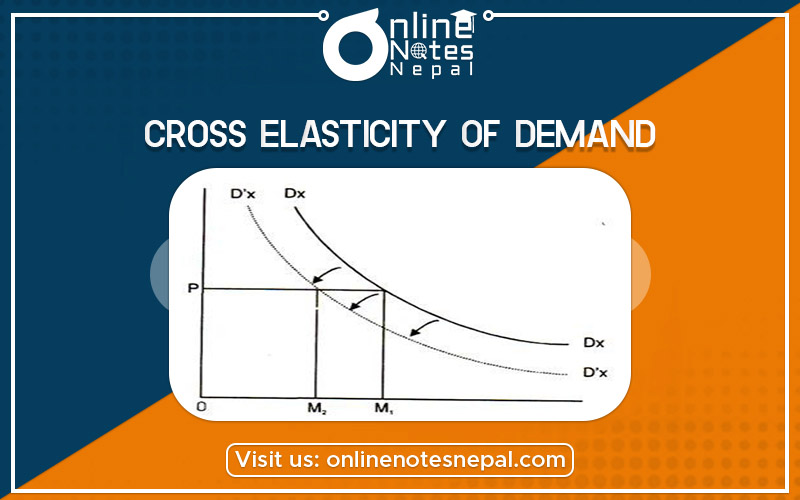Published by: Zaya
Published date: 15 Jun 2021

Cross Elasticity of Demand is a measurement of responsiveness of quantity demanded of ‘x’ goods due to change in the price of ‘y’ goods. It is connected with substitutes and complements.
i.e. Ec or ec = % ∆Qd of ‘x’ goods ÷ % ∆p of ‘y’ goods
When the demands for a commodity and the price of a related good commodity change in the same direction, then it is known as positive cross elasticity. Thus, goods are complementary goods.
Let, the initial price of Y good and demand for X good are OP1 and OQ1 respectively. As the price of Y good raises from OP1 to OP2, demand for X good also raises OQ1 to OQ2. It implies that the demand for X good varies positively with the price of X good. Hence, cross elasticity of demand is positive on demand curve DD1 which slopes upwards from left to right.
When the demands for a commodity and the price of its related commodity change in the opposite direction, then it is known as negative cross elasticity. Then, goods are substitute goods.
Let, initial price OP and OQ respectively. As a fall in the price of X from 0P to 0Po. Demand for Y good rises from 0Q to 0Qo. It implies that the demand for Y good varies inversely with the price of Y good. Thus, it is negative on the demand curve, which slopes downwards from left to right.
When the change in the price of one commodity has no effect on the demand of another commodity the cross elasticity of demand is said to be zero.
Let, the demand curve QD is parallel to Y-axis. This slope shows that the demand for X goods remains fixed i.e, 0Q whatever be the change in the price of Y good (rises from P2 to P3 or falls from P2 to P1). Thus, it is zero on-demand curves (DQ).